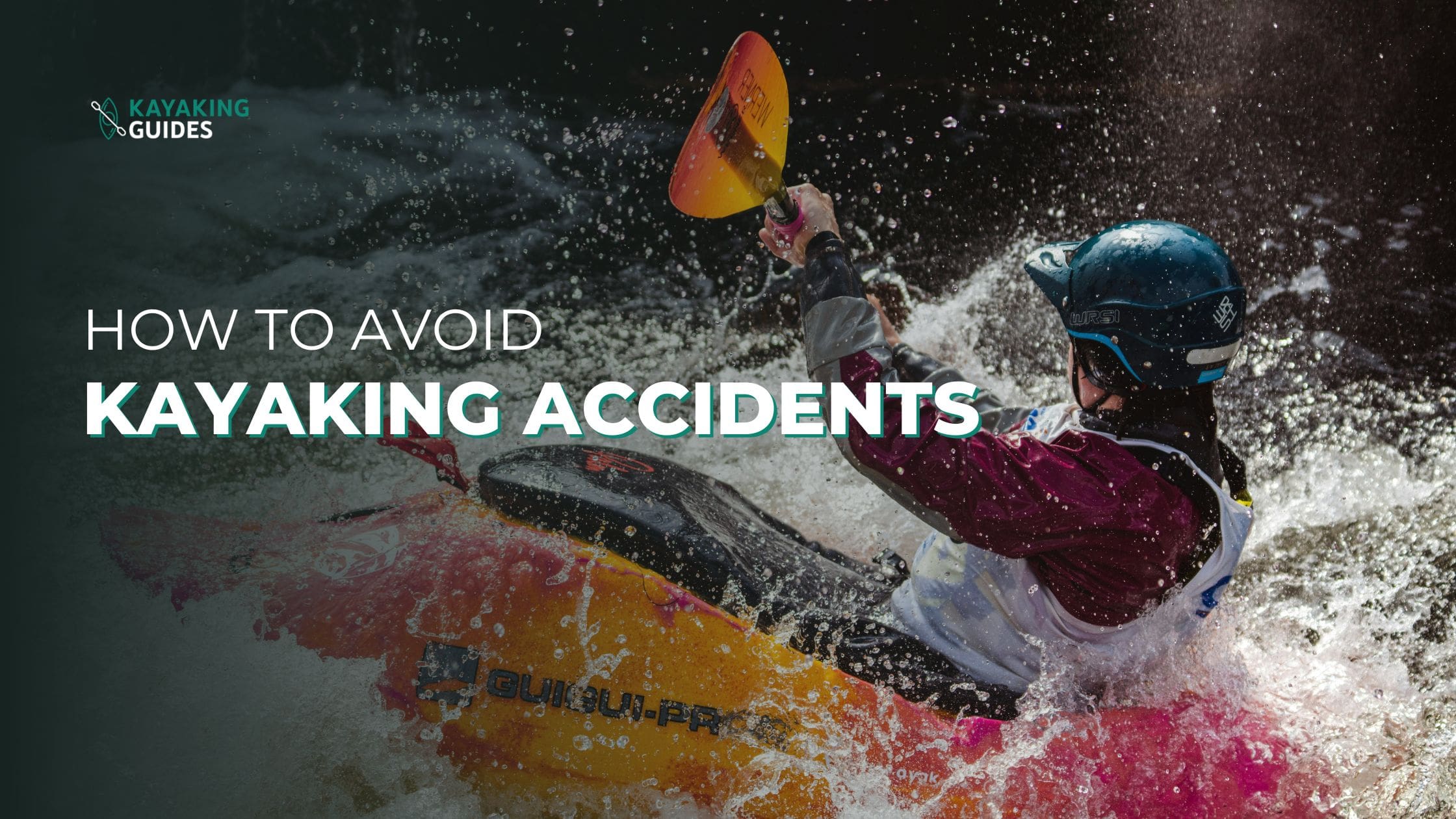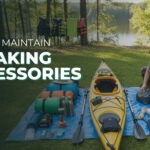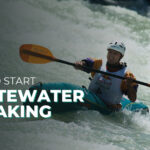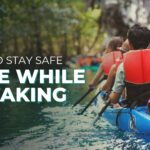Kayaking is an exciting outdoor activity that lets you see the beauty of waterways. But, it also has risks. This guide will give you key kayaking safety tips, ways to avoid kayak injuries, and methods to prevent kayak accidents. This will make your kayaking trip safe and fun.
Whether you’re experienced or new to kayaking, knowing how to prepare, stay safe, paddle right, and handle emergencies is vital. This safety guide will help you start your kayaking adventure with confidence and safety.
Essential Pre-Kayaking Safety Preparations
Before you start your kayaking trip, it’s key to prepare for safety. By getting ready, you can lower the risks and have a fun and safe time on the water.
Weather and Water Conditions Assessment
Check the weather and water before you go kayaking. Look at wind speed, rain, and water temperature. Know if it’s good for your trip. Also, learn about the waterways and dangers like strong currents or underwater things.
Equipment Safety Checklist
- Check your kayak for any damage.
- Make sure all safety gear, like life jackets and paddles, work well.
- Bring water, snacks, and a first-aid kit.
- Keep all your stuff safe in the kayak.
Personal Flotation Device Selection
Getting a good personal flotation device (PFD) is very important for kayaking risk management. Pick one that fits you well and is right for your kayaking. Make sure it’s on tight and keeps you afloat if needed.
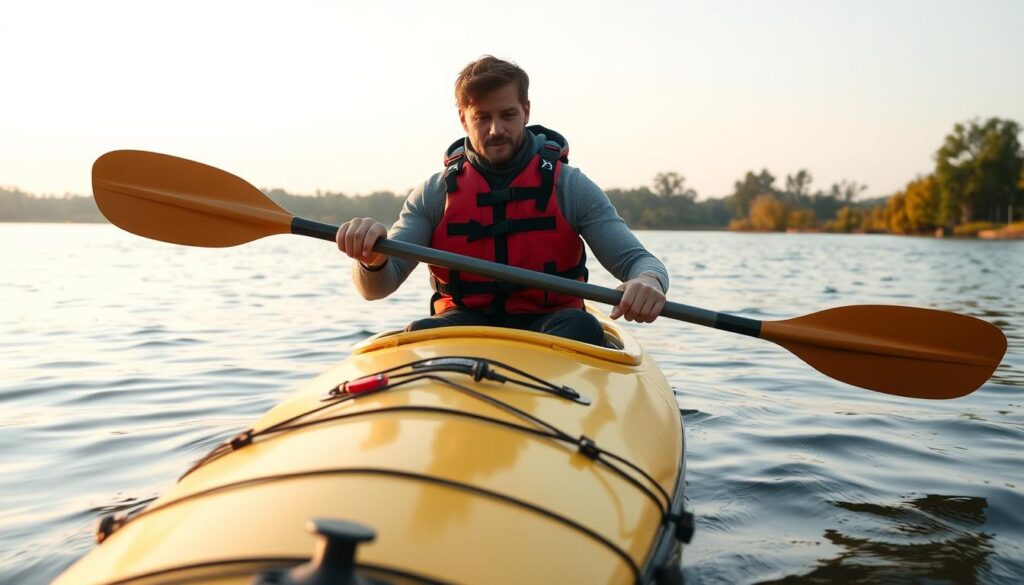
By preparing well and checking safety, you can make your kayaking better and safer. Enjoy your time on the water more.
How to Avoid Kayaking Accidents
Kayaking is exciting and rewarding, but safety comes first to avoid accidents. By using key strategies, kayakers can lower the risk of dangerous situations. This way, they can enjoy their time on the water without worry.
Planning your trip is a smart move. Check the weather and water conditions before you go. Make sure they match your skill level and the route you plan to take. Look out for hazards like strong currents or underwater obstacles to stay safe.
Keeping your kayaking gear in good shape is also key. Regularly check your life jacket, paddle, and other equipment. Make sure they work right and meet safety rules. Good gear and regular checks can help prevent accidents.
Developing Kayaking Skills
Getting better at kayaking is important for safety. Take lessons from experts to improve your paddling and learn how to handle different water conditions. Knowing how to deal with emergencies is also crucial.
- Practice self-rescue techniques, such as the “wet exit” and “re-entry” procedures, to be prepared in case of capsizing.
- Learn how to navigate through rapids and strong currents safely.
- Develop an understanding of kayaking hazards and risks, such as underwater obstacles and weather-related challenges.
By planning well, keeping your gear in order, and improving your skills, you can greatly reduce accident risks. This way, you can have a safe and fun time kayaking.
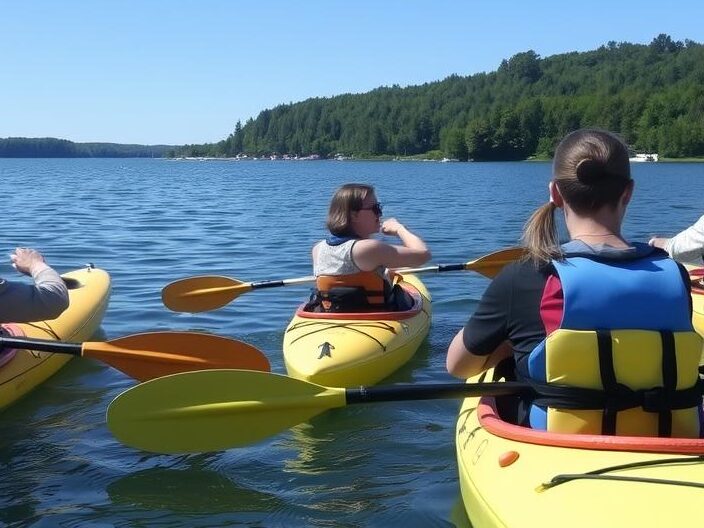
Understanding Common Kayaking Hazards and Risks
Kayaking is an exciting outdoor activity, but it comes with risks. Kayakers face challenges like navigating rapids and dealing with unexpected weather. Knowing these hazards helps paddlers stay safe and avoid capsizing.
Navigation Through Rapids and Strong Currents
Going through rapids and strong currents is tough, even for experts. Changes in water flow and hidden rocks can be dangerous. It’s important to scout the area, spot hazards, and plan a safe path.
Dealing with Underwater Obstacles
Objects like logs and rocks underwater can harm kayakers. They can damage a kayak’s hull, leading to capsizing. Paddlers should watch their surroundings closely and steer clear of dangers.
Weather-Related Challenges
Weather changes can be a big challenge for kayakers. Winds, rain, lightning, and rough waters increase the risk of capsizing. Keeping an eye on the weather and being ready to change plans is key to a safe trip.
By knowing and tackling these hazards, kayakers can stay safe. Being alert and ready for surprises is essential for a fun and safe kayaking adventure.
Proper Paddling Techniques and Body Positioning
To have a safe kayaking experience, it’s important to learn the right paddling techniques and keep your body balanced. These skills help you control your kayak better, paddle more efficiently, and stay safe on the water.
Learning the correct paddling techniques is key. You’ll use strokes like the forward stroke, J-stroke, and bracing stroke to move forward and stay stable. Keeping your back straight, shoulders relaxed, and core strong helps prevent muscle strain and fatigue.
It’s also crucial to know how to adjust your body and use your paddle in different water conditions. Techniques like edging the kayak, using the paddle for stability, and distributing your weight help you stay in control, even in tough situations.
Proper Paddling Techniques
- Efficient forward stroke
- Effective J-stroke for steering
- Bracing stroke for stability
Optimal Body Positioning
- Maintain a straight back and relaxed shoulders
- Engage your core muscles for stability
- Adjust your weight distribution as needed
By using these safe kayaking techniques and keeping your body in the right position, you can improve your control, lower injury risks, and enjoy a safer paddling experience. Mastering these skills will make your time on the water more memorable and rewarding.
Emergency Response and Rescue Procedures
When you’re on the water, being ready for emergencies is key. Knowing how to respond and rescue is vital. These skills can save your life and the lives of others.
Self-Rescue Techniques
Knowing how to save yourself is your first step. Learn to roll your kayak, get back in, and swim to safety. Practice these skills to feel more confident and prepared.
Group Rescue Protocols
Kayaking is often a team sport. Knowing how to work together in emergencies is important. Learn how to assist each other, use throw bags, and tow people to safety.
Communication During Emergencies
Good communication is essential in emergencies. Carry devices like whistles and flares to signal for help. Also, use hand signals to coordinate with your group and warn others of dangers.
By learning and practicing these emergency steps, you can handle any challenge on the water. Remember, safety tips like these are crucial for a safe kayaking experience.
Conclusion
In this guide, we’ve covered key strategies to avoid kayaking accidents. We talked about preparing before you go and mastering paddling skills. We also discussed being ready for emergencies.
It’s important to know the weather and water conditions. Make sure your equipment is in good shape. Choosing the right life jacket is a must.
Knowing how to handle rapids and underwater obstacles is crucial. Keeping your body in the right position helps prevent accidents.
By following these tips, you’ll have a safe and fun kayaking experience. Use these kayaking safety tips to avoid kayaking accidents. This way, your time on the water will be exciting and worry-free.
FAQ
What are the most important pre-kayaking safety preparations?
Before you go kayaking, check the weather and water. Make sure your gear is safe and in good shape. Choose the right life jacket.
How can I avoid common kayaking accidents and hazards?
To stay safe, plan well and learn new skills. Know how to handle rapids and strong currents. Also, be ready for underwater obstacles and changing weather.
What are the proper paddling techniques and body positioning to prevent injuries?
Use the right paddling strokes and keep a good posture. This helps you stay in control and avoids injuries during long trips.
What should I do in case of a kayaking emergency?
In an emergency, know how to save yourself and others. Use rescue techniques and talk clearly to keep everyone safe.
